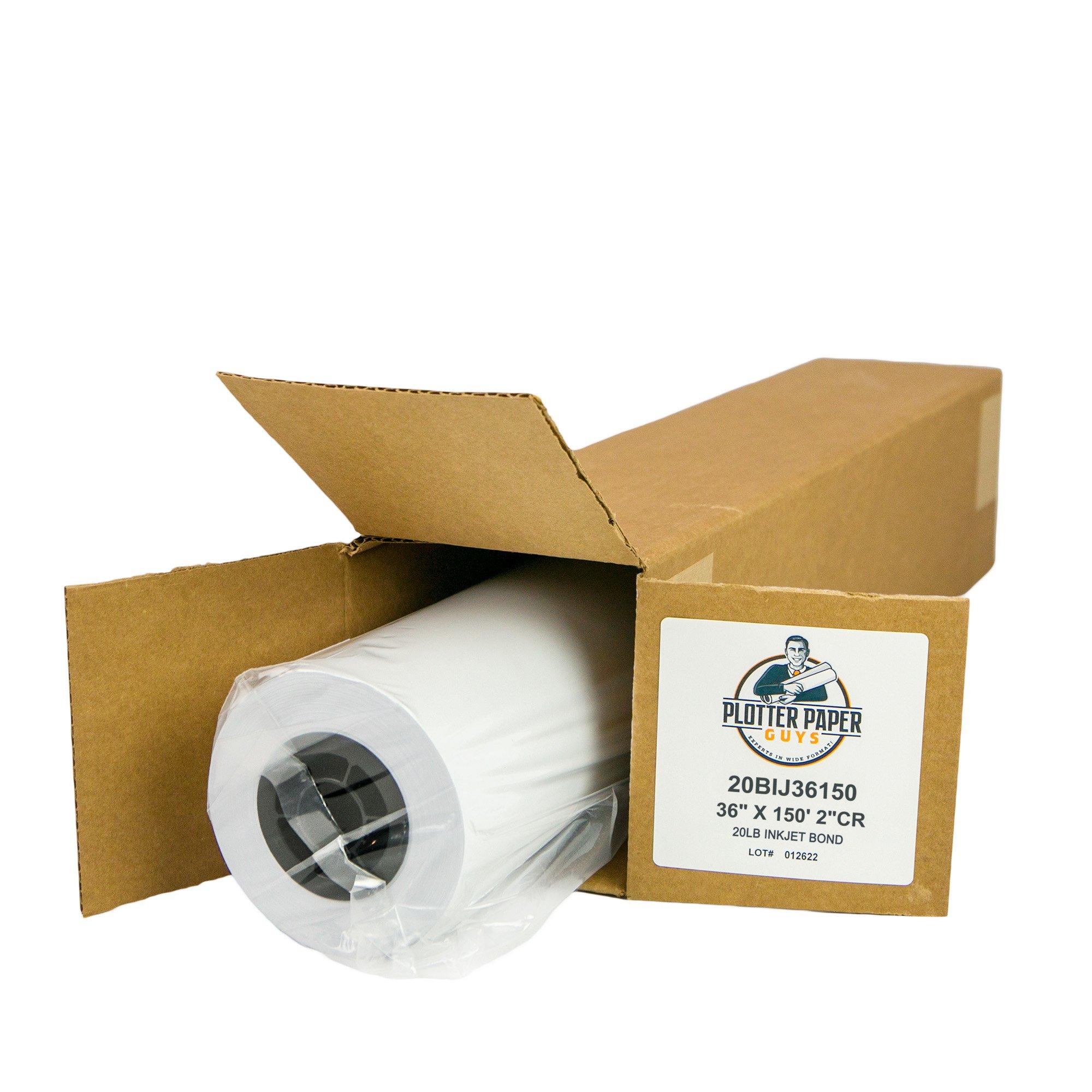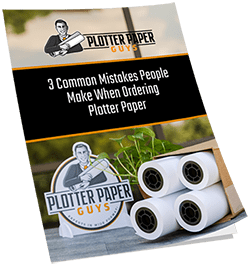Have you been looking for new project inspiration? Why not try a five-hundred-year-old paper trend that’s been used for everything from government bonds to electronic printers? In today’s article, we’re looking at commonly asked questions about the 36-inch bond paper roll.
First, we’ll explain the different sizes, why they matter, and why 36-inch bond paper might be a good choice for your project.
So, let’s get started!
What is a Bond Paper Roll?
Bond paper is made of cotton. In comparison to regular paper, this composition makes bond paper exceptionally durable. It is also heavier and stiffer than traditional paper.
This makes it a good printing choice as it can absorb more ink. It was used for important government documents known as bonds – hence the name.
However, it is now a popular choice for detailed graphic works, letterheads, and office supplies. The bright white and slightly rough texture gives bond paper projects a high-quality finish.
As a result, the text stands out well and can create an elegant and sophisticated product. Bond paper rolls are usually used for commercial projects, as they come in long rolls that work with various printers.
There are different types of coatings that allow bond paper rolls to print receipts and invoices. In contrast, 36 inch coated rolls are suitable for printing high-resolution color prints or high-contrast pieces.
Since many bond roll options are woodfree, sustainable projects might consider bond paper as an alternative to traditional paper.
What Paper Size is a 24-Inch Roll?
To get an idea of the different bond paper sizes, we can look at how they’re used. For instance, 24-inch bond paper rolls are another popular choice. Twenty-four inches is approx 60.96cm.
This is similar to the A2 paper size (23.4 inches or 59.4cm) or the equivalent of 2 A4 sheets. In architecture and engineering, it falls under the classification of Arch C (18 x 24 inches) or Ansi D (though this is somewhat less comparable – 22 x 34 inches).
While some will use this paper directly for sketching or testing designs, it can also print high-quality finished drafts. Artists may also use it when they need irregular or larger paper sizes for their projects.
What Paper Size is a 36-Inch Roll?
36-inch bond paper rolls can add more depth or details. 36-inch rolls are larger than an A0 sheet in width (approx 33.1 inches). By architecture paper standards, this falls under the category of Arch D, which is 24 x 36 inches.
It can be used for blueprint and house plans, or even construction papers depending on how detailed the project is.
What is a 36” Bond Paper Roll Used For?
Commonly, bond paper is specially manufactured with a xenographic coating. Xenography is a process also known as dry-printing or electrophotography.
This means electrically charged printer ink particles can transfer directly to the photo paper. The benefit of this coating is the paper will be less brittle and will not yellow or deteriorate over time.
Since then, it’s been a popular printing technique used in most modern printers and photocopiers designed for inkjet papers.
It can produce high-speed technical renderings on to the paper in large format sizing. In addition to commercial and professional use, it can produce large-scale images.
Both are useful for artistic and promotional products. In addition, it’s used in product design, such as CAD images and graphic displays, because of the sharp printing quality.
It can be used with printers such as:
- HP printers
- Canon
- Xero
- OCE printers
However, given the large reel size of 36-inch bond paper rolls, you will need to use wide-format inkjet printers to use it. Don’t feel like you need to have professional printing services do the job for you to get the best result and value for your money. There are many affordable wide-format printers that you can purchase and use yourself, like the Canon GP-300.
What Is the Difference Between Bond Rolls and Thermal Rolls?
Bond paper and thermal paper are sometimes confused. This is because both are often used for printing receipts. However, the difference between them comes down to the printing technique and purpose of the paper.
Thermal papers are coated with a mixture of dye and chemicals designed to react to heat. When thermal paper passes through a thermal printer, the heat causes the ink to appear.
The benefit of thermal paper is that it is quick to print, often in large quantities, and requires less maintenance than traditional printers.
However, thermal paper is not usually a good choice for professional projects. It does not print colors well. Nor can it produce the high-quality finishes expected in commercial projects. For this reason, bond paper is a better alternative.
What 36” Bond Paper Rolls Are Available?
Engineering and architectural bond paper: this xerographic 36-inch bond paper roll is ideal for rendering large-scale product and planning designs.
It comes with two rolls that can produce approx 500 pages each, weighing 20 or 24 lb. It is an affordable choice for businesses looking for a high-quality printing option for their projects.
In addition, it produces crisp finishes for high-contrast works that can be used for commercial and graphic projects.
Are You Ready to Start Using a 36″ Bond Paper Roll?
If you need custom bond paper rolls, we can manufacture custom printer paper sizes and quantities to suit your business’s needs. Bright white bond paper is the industry standard for architectural, graphic, and engineering projects.
So, bring your project to life today with Plotter Paper Guys’ expert service for large format printing. Or browse our wide selection of resources to get a better feel for everything we have to offer!




